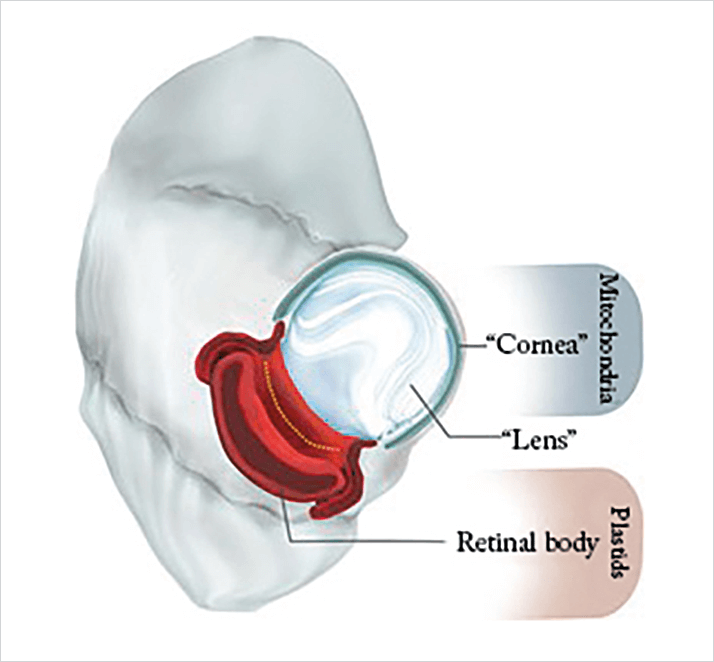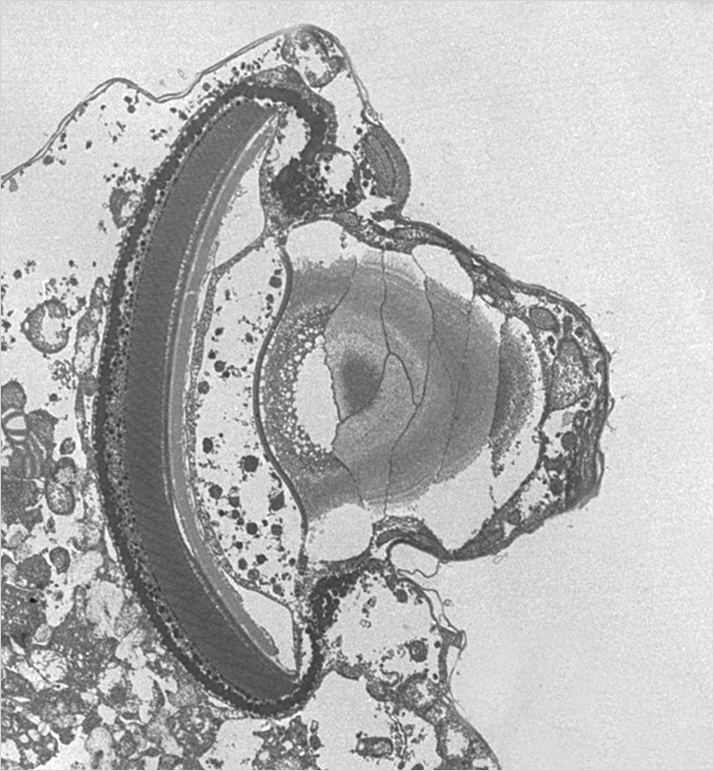
The human eye is a complex structure, but not a unique one – eyes are thought to have evolved independently between 40 and 65 times in different organisms (1). Unicellular organisms have thus far been limited to the simplest stage of eye evolution, the eyespot, which is no more than a light-sensitive region of photoreceptor proteins capable of distinguishing light from dark. But one single-celled plankton, the warnowiid dinoflagellate, hasn’t settled for eyespots – instead, the organism has evolved itself a miniature mimic of the multicellular eye.
Called an “ocelloid,” the eye-like structure is a prime example of exaptation, the co-option of a structure intended for one purpose to fulfill another. In the case of the warnowiid ocelloid (Figure 1), a layer of mitochondria forms a makeshift cornea over the vesicular lens, while the “retina” is composed of a network of double-membraned organelles called plastids (2). Despite its unique composition, the ocelloid looks so much like a true, multicellular eye that researchers initially mistook it for the eye of a more complex organism eaten by the plankton. In a press release from the University of British Columbia, where the origins of the ocelloid were examined (Figure 2), lead author Greg Gavelis said, “It’s an amazingly complex structure for a single-celled organism to have evolved. It contains a collection of subcellular organelles that look very much like the lens, cornea, iris and retina of multicellular eyes found in humans and other larger animals” (3).

The similarity between the ocelloid and the complex eye highlights the similarities between the multiple evolutions of the eye – the presence of opsins, the need for an opaque “retinal” surface, and, in the case of advanced forms like the ocelloid, the presence of a focusing lens and even a “cornea.” It’s a particularly striking case of convergent evolution because the ocelloid is one of the most complex structures seen in a unicellular organism. But where there is an evolutionary need for such complexity, as the repeated development of visual sensory organs at all levels of complexity has shown, life will find a way.
References
- RD Fernald, “Evolving Eyes”, Int J Dev Biol, 48, 701–705 (2004). PMID: 15558462. GS Gavelis, et al., “Eye-like ocelloids are built from different endosymbiotically acquired components”, Nature, 523, 204–207 (2015). PMID: 26131935. The University of British Columbia, “Single- celled predator evolves tiny, human-like ‘eye’”, (2015). Available at: http://bit.ly/1NOlMxB. Accessed July 17, 2015.
